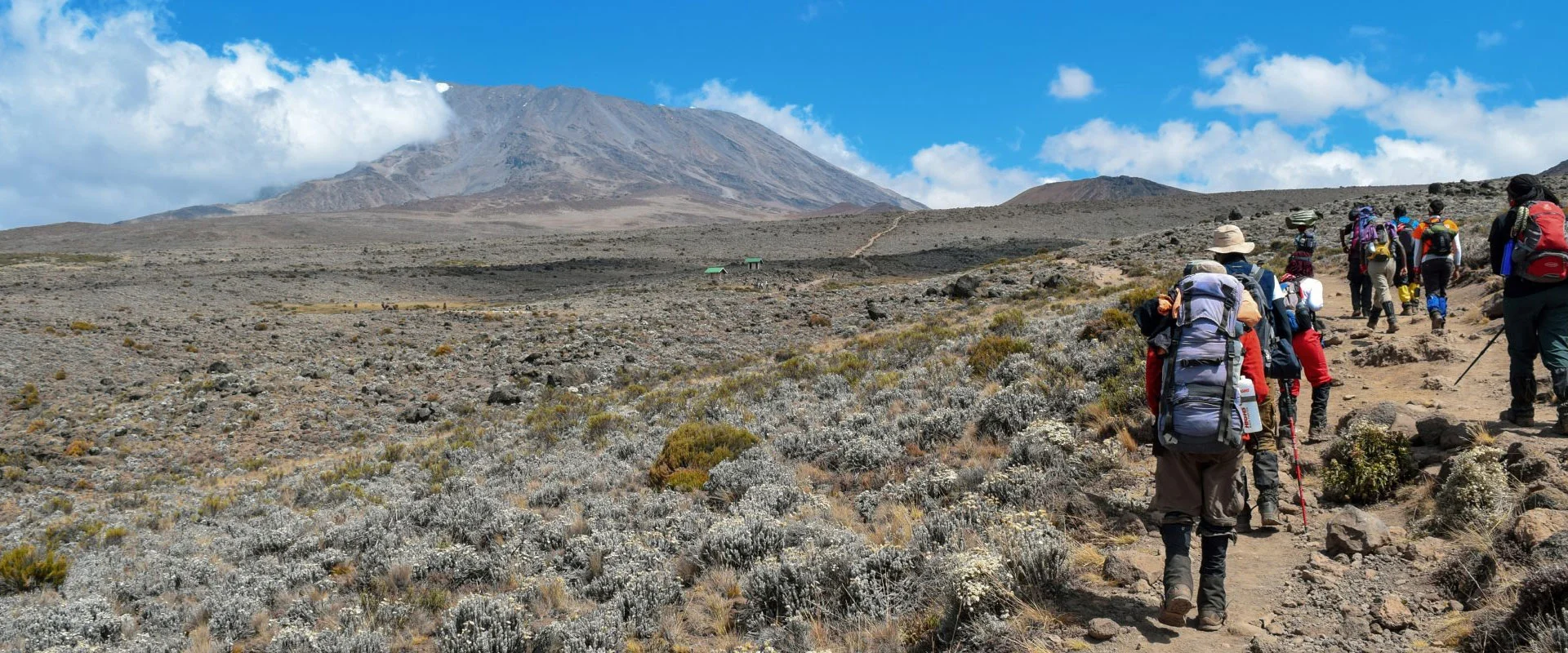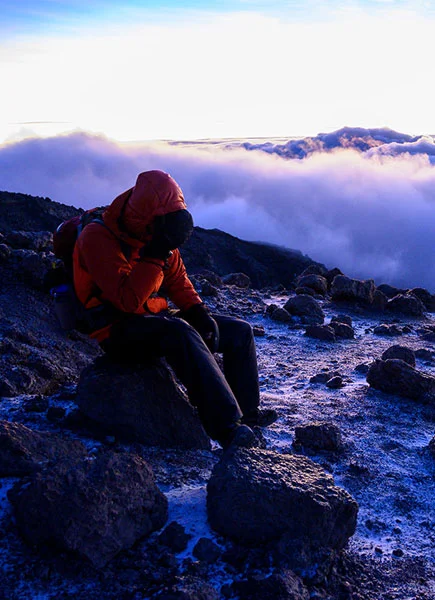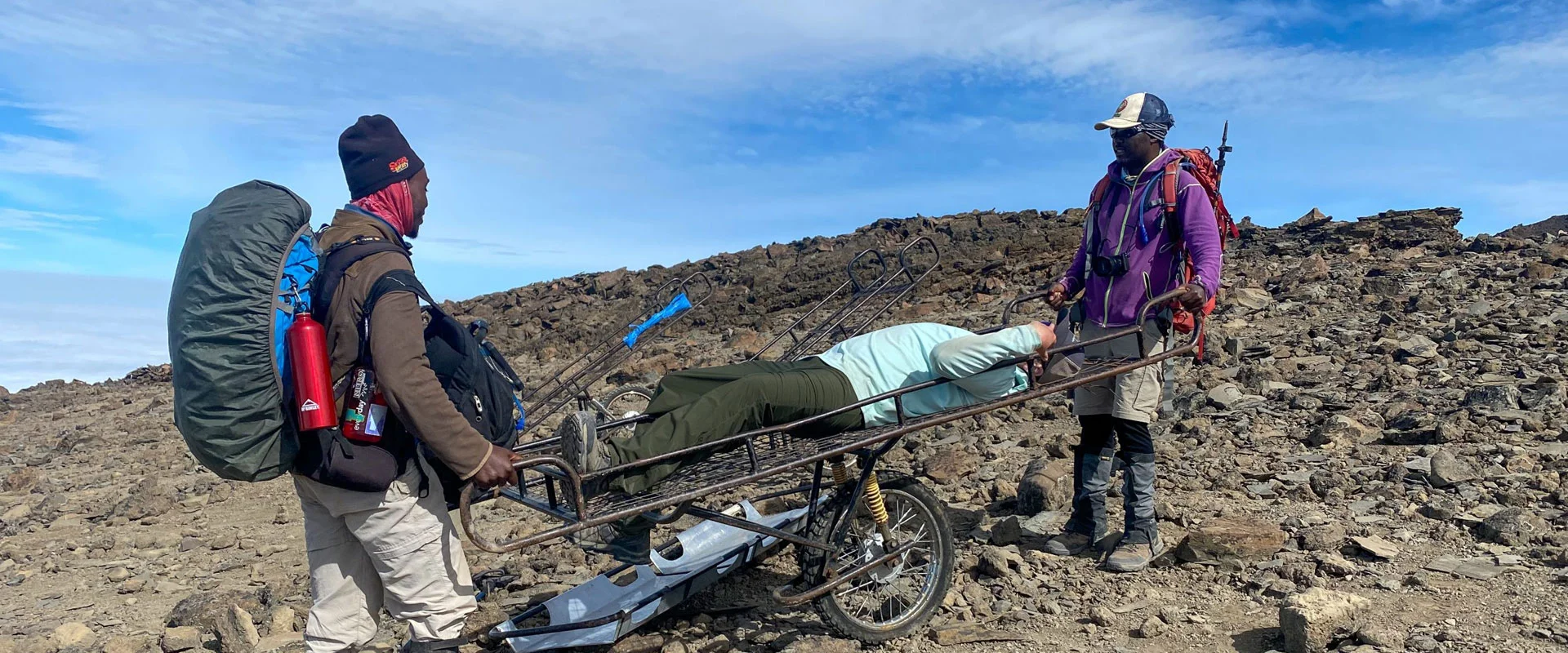
Travel Guide Details

Travel Guide Details


Altitude sickness is a range of symptoms that can occur when someone ascends to a high altitude too rapidly, without sufficient acclimatization. The body can adjust to the reduced air pressure at higher altitude, but only at a rate of about 300 m (1000 ft) altitude gain per day. If you ascend faster, and everybody climbing Kilimanjaro will, then you may develop altitude sickness.
There are three main forms of altitude sickness:
Both HAPE and HACE are potentially fatal but are thankfully rare during a well planned Kilimanjaro climb.
What exactly causes the individual symptoms of altitude sickness is still not fully understood. There is also a range of other symptoms you are likely to experience during a Kilimanjaro climb due to the altitude.
They are considered normal and should not worry you:
None of those symptoms are altitude sickness.
The symptoms of acute mountain sickness as described above are self limiting and not dangerous. In fact, your guides may tell you during the briefing not to worry, that it is totally normal to be vomiting repeatedly during that last final push top the summit. Nice¦
However, if you do experience symptoms, your guides should also keep monitoring you, because AMS can progress to one of the more severe forms of altitude sickness. HAPE and HACE are potentially fatal! Make sure that you always remain in contact with your guides and let them know exactly how you are feeling. Also keep an eye on your climbing partners, since people suffering from these severe conditions may not be able to correctly assess their own condition. Anybody experiencing symptoms that could indicate HAPE or HACE needs to descend IMMEDIATELY or they will die. But please do not panic now.
As I said above, these conditions are rare, provided you act sensibly when on the mountain.
Anybody can get altitude sickness. There is no way to predict how your body will react if exposed to high altitude without proper acclimatization. Susceptibility to altitude sickness is random. Fitness is no protection. People who are extremely fit and exercise a lot get it just an easily as couch potatoes. There are many stories that indicate they may be even more susceptible! Men appear to be more susceptible than women, especially young and fit men. (Competitiveness and the desire to show off plays a part in this. Men will often ascend faster. Too fast.) Older people seem to be less susceptible. (Older people will ascend more slowly, and nothing protects you better from altitude sickness than ascending slowly.)
Highly susceptible people can experience symptoms from 2500 m (7000 ft) onwards, in rare cases even below that. The chance of developing AMS increases with the height but the rate of altitude gain is even more important.. Mt. Kilimanjaro is 5895 m (19340 ft) high. Pretty much everybody on a Kilimanjaro climb will experience some symptoms of altitude sickness during that last push to the summit. There are other factors that increase the likelihood of altitude sickness, apart from the absolute height itself:
Symptoms of acute mountain sickness typically take one or two days to disappear. If you keep ascending they may not go away. For most people the symptoms come and go during the day, disappear over night, only to come back the next day as the climb continues. AMS can be very unpleasant, but with the right preparation and at a sensible pace, most people can climb to at least the last camp below the crater rim (around 4700m). Its that last push to the summit where AMS becomes the make it or break it issue.
You climb Kilimanjaro with knowledge that every detail of your trip has been designed by one of the professional mountain guide and high altitude experts. Your safety is our paramount concern on your Kilimanjaro trek. You leave home with the comfort of knowing that during your trek all you have to worry about is putting one foot in front of the other. We take care of the rest
Rise above the ordinary by climbing Kilimanjaro
Expertise in Authentic Tanzanian Travel Experiences
Our tours offer enriching safari experiences across Tanzania. We focus on genuine cultural exchanges, environmental care, and supporting local communities. This approach enhances your trip and positively impacts the regions you visit, deepening your understanding and appreciation of the country.
A few months have passed, and I am still immersed in a happy and wonderful safari trip, with beautiful grasslands, lazy lions, and clever zebras... I am very grateful to the enthusiastic Marko, who planned based on my needs